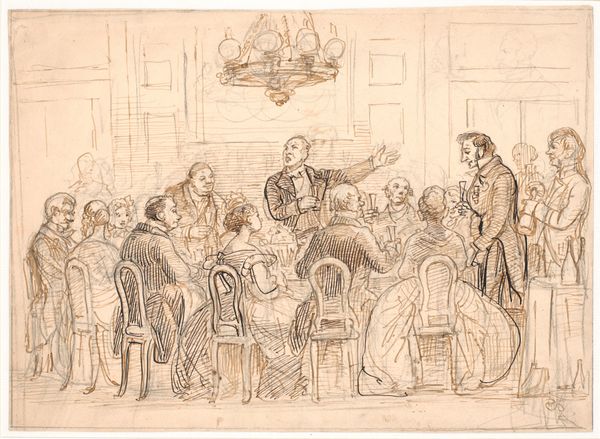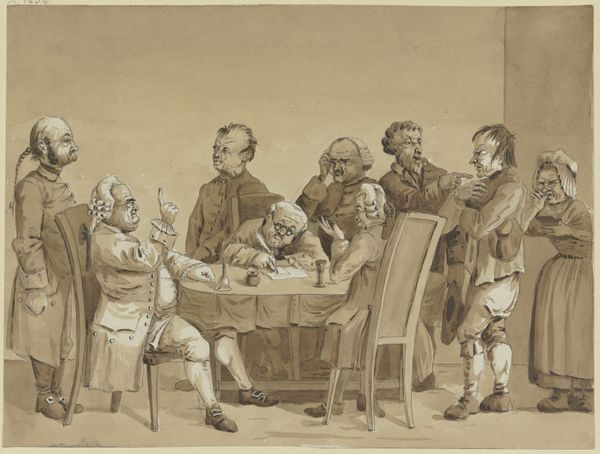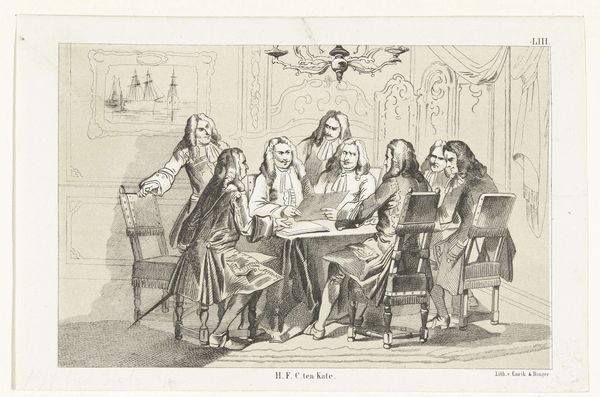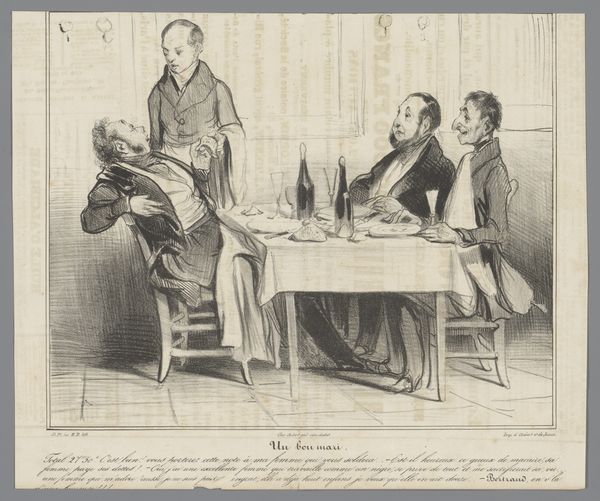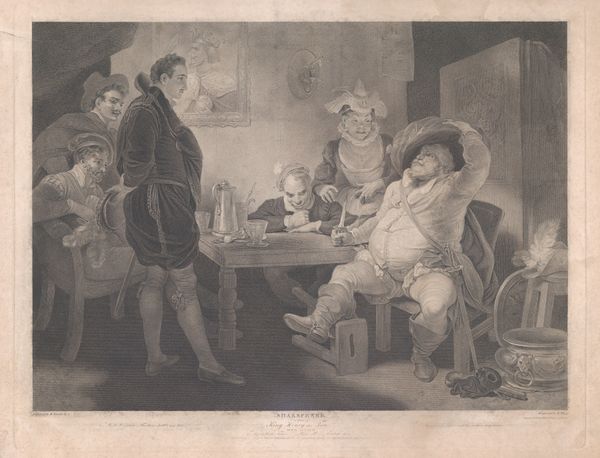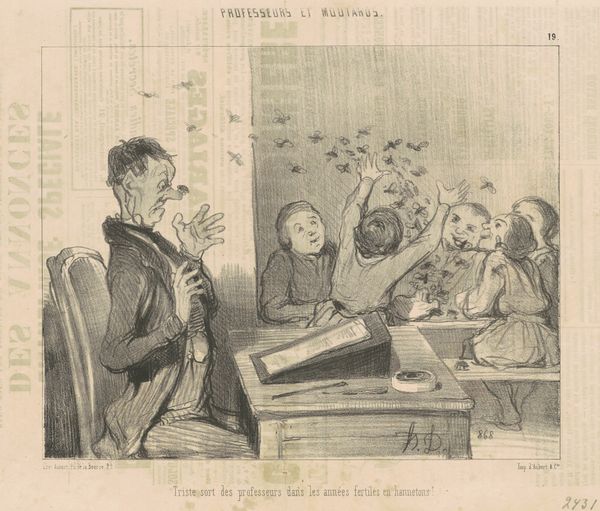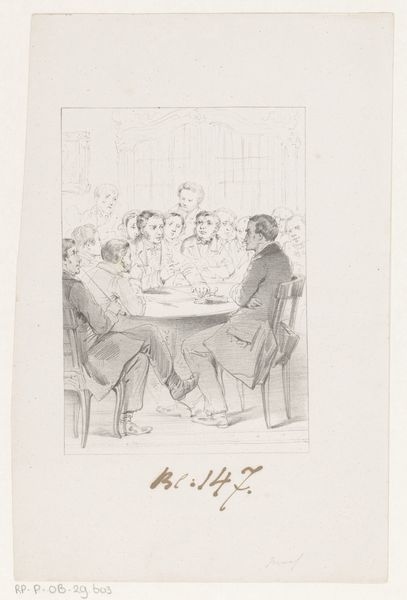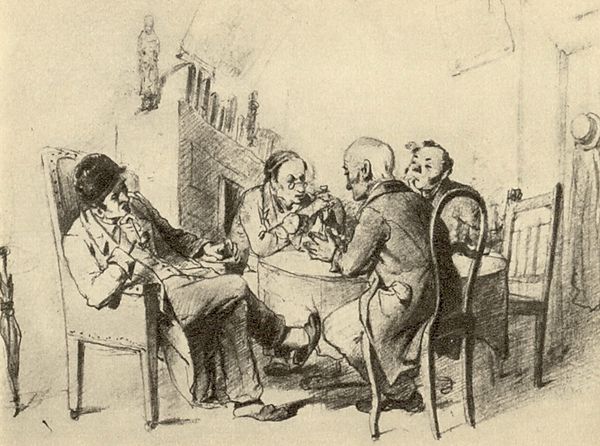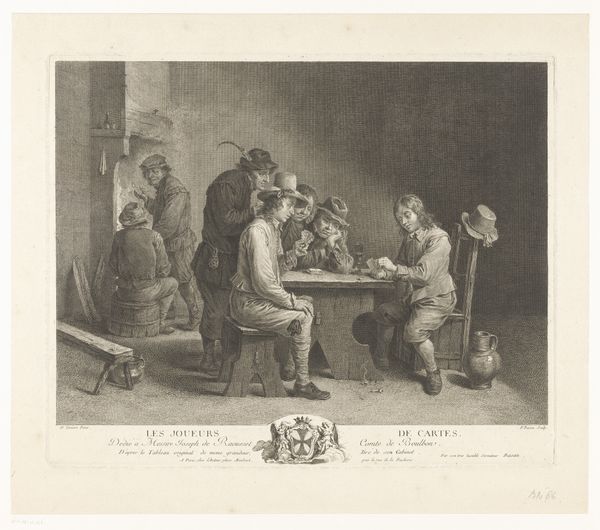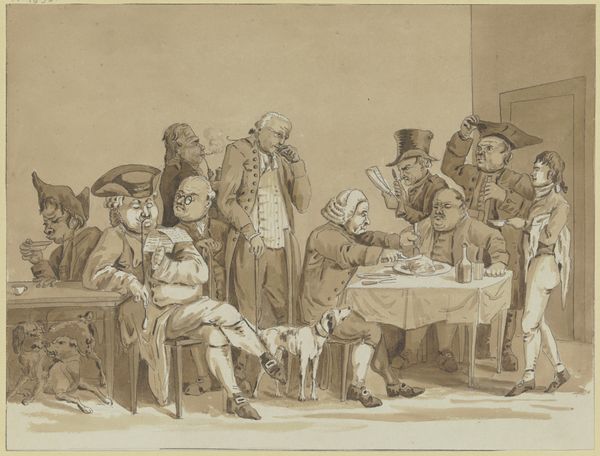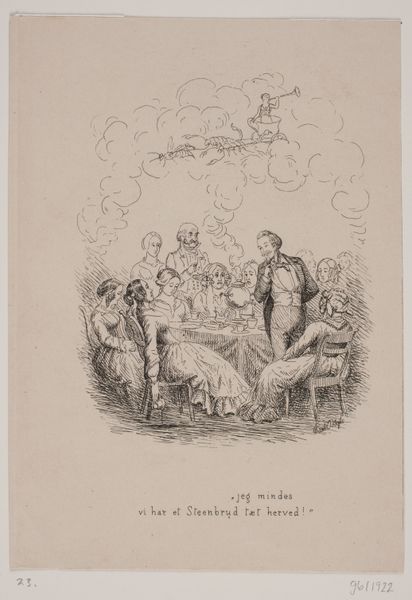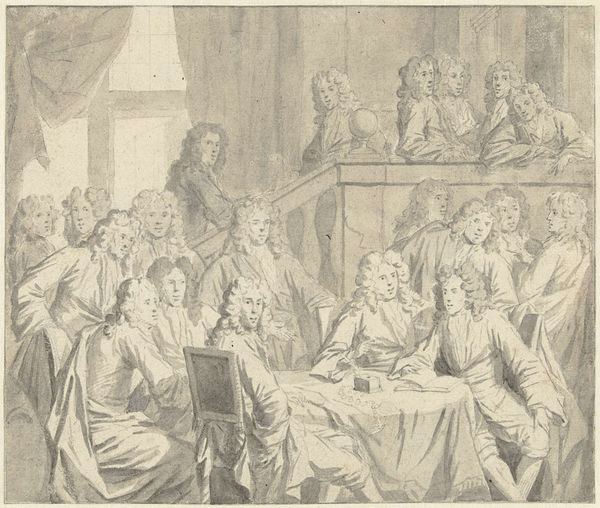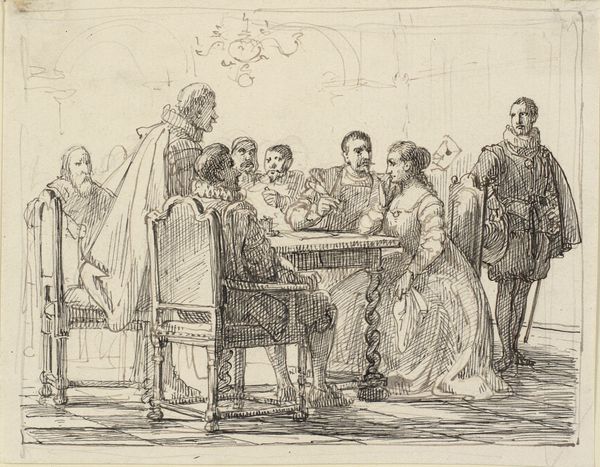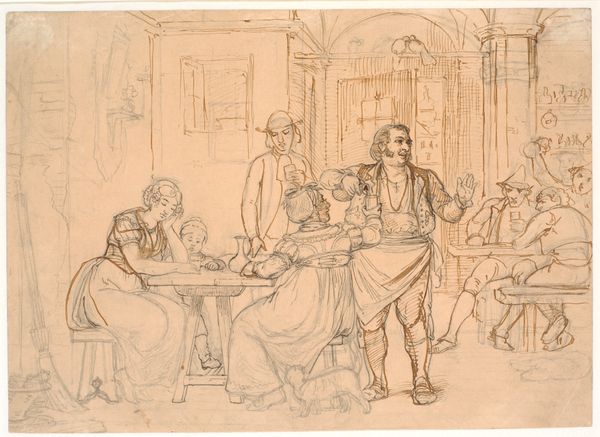
drawing, pencil
#
drawing
#
romanticism
#
pencil
#
genre-painting
Dimensions: 212 mm (height) x 310 mm (width) (bladmaal)
Editor: Here we have P.C. Skovgaard's "Kaffeselskabet hos Fru Freund Løverdag Formiddag," a pencil drawing from 1843. There's a really serene atmosphere here; a group gathered around a table, seemingly enjoying tea. It makes me wonder about the social dynamics at play. What stands out to you in this drawing? Curator: Well, let’s look closely at what this scene represents materially. Consider the objects depicted – the specific type of tableware, the style of clothing. These are not just decorative details. The artist renders each figure’s clothes and their individual activity surrounding the table as a clear mark of class identity and access to commodity culture. The material markers indicate a distinct form of consumption and social practice prevalent at the time. Editor: So you're saying that this is more than just a casual drawing; that there’s a conscious awareness of class through the detailed depiction of the materials? Curator: Exactly. The artist isn't merely observing; he's highlighting how class is manifested and maintained through the very fabric of daily life: consider, too, the means of its creation. Drawing in pencil makes this image reproducible, which puts it in dialogue with the rise of print culture at the time, a developing culture democratizing art's materials, to a degree. Do you see those chair designs, particularly on the left, next to the figure of the child? Editor: I see them now! Their details imply a degree of craftsmanship beyond simple utility, signaling expense in labor, the details. It is true then that the objects point to more significant class dynamics! Curator: Precisely! Considering Skovgaard's access to particular networks and markets, a piece like this offers insights into production and consumption beyond the individual level. The material details of a seemingly peaceful domestic scene serve as evidence of societal structures and their means of replication, inviting critical thinking regarding labor and privilege. Editor: It’s amazing how much these details say once you start digging. I'll certainly look at similar works in a new way now.
Comments
No comments
Be the first to comment and join the conversation on the ultimate creative platform.
